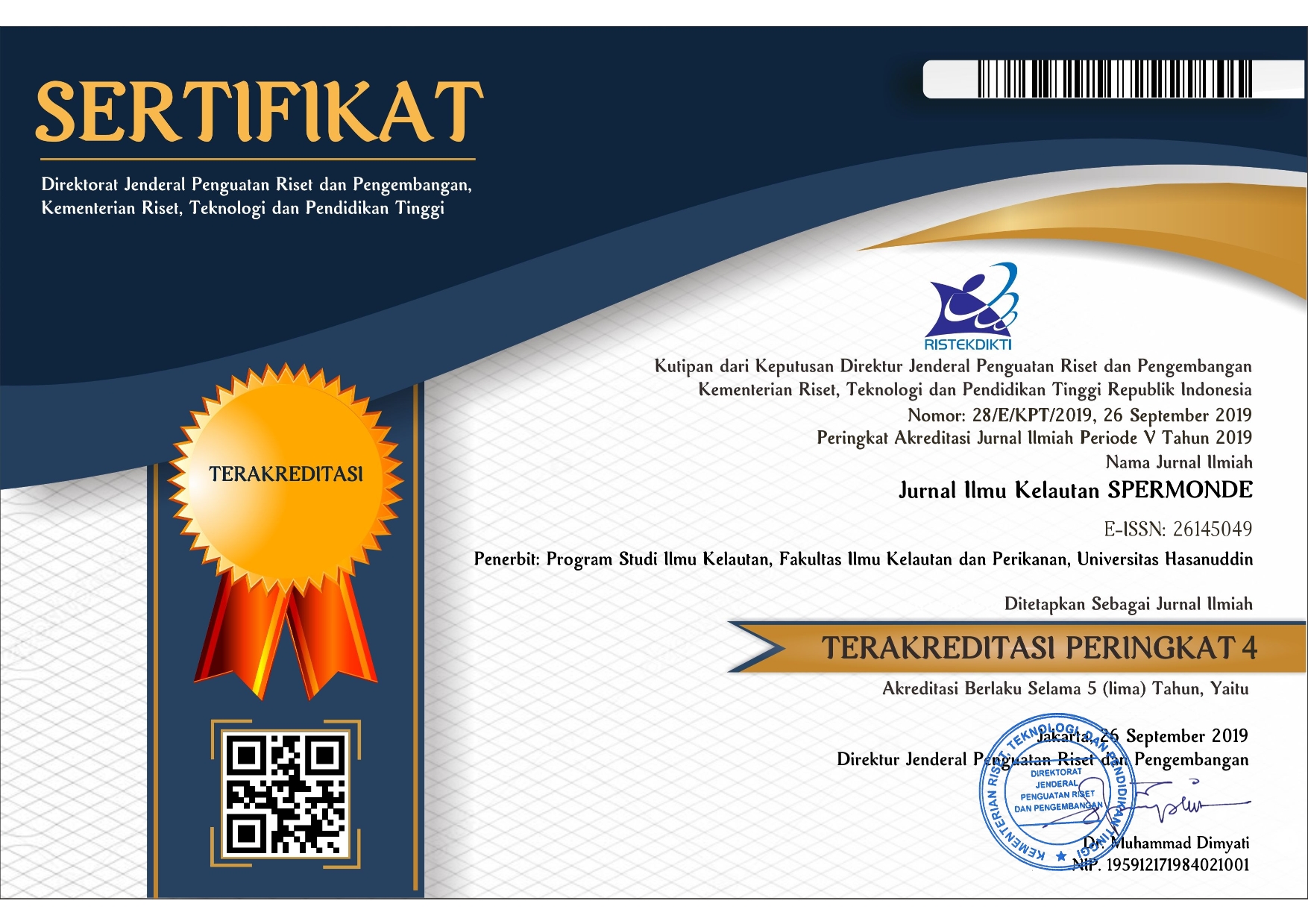ANALYSIS OF MESOPLASTIC WASTE COMPOSITION IN TOURISM AREA, MUARA BADAK DISTRICT, KUTAI KARTANEGARA REGENCY, EAST KALIMANTAN
DOI:
https://doi.org/10.20956/jiks.v9i2.26802Abstract
Waste is one of the problems for people all over the world, marine debris can come from community activities from the mainland or from the coast. Most of the activities of coastal communities may produce waste including fishing and tourism activities. Research on plastic waste in the Tourism Beach area of Muara Badak District was conducted to identify the type of mesoplastic, analyze the total weight, density and proportion of mesoplastic and determine differences in mesoplastic. This research was conducted at two tourist beach locations, namely Panrita Lopi Beach and Jingga Beach. The research method used was Purpusive Sampling method with recycling and making transect lines with a size of 100 m × 20 m, followed by dividing the transect into 5 lanes measuring 5 m x 5 m. Four types of mesoplastic were found, namely film, fiber, fragment and styrofoam. The amount of trash found on both beaches was 53 particles with the number of particles on Panrita Lopi Beach as many as 32 particles and Jingga Beach was 21 particles. The results of the composition of the percentage of waste obtained at Panrita Lopi Beach were 50% for fragment types and at Jingga Beach for 71% for filament types. The most common amount of trash found was at Panrita Lopi Beach, this was due to the fact that the number of visitors was greater than that of Pantau Jingga. The relationship between length and weight of waste at Panrita Lopi Beach was 94% while at Jingga Beach it was 58%.Downloads
Download data is not yet available.
Downloads
Published
2023-10-04
Issue
Section
Articles
License

This work is licensed under a Creative Commons Attribution-NonCommercial 4.0 International License.

This work is licensed under a Creative Commons Attribution 4.0 International License










